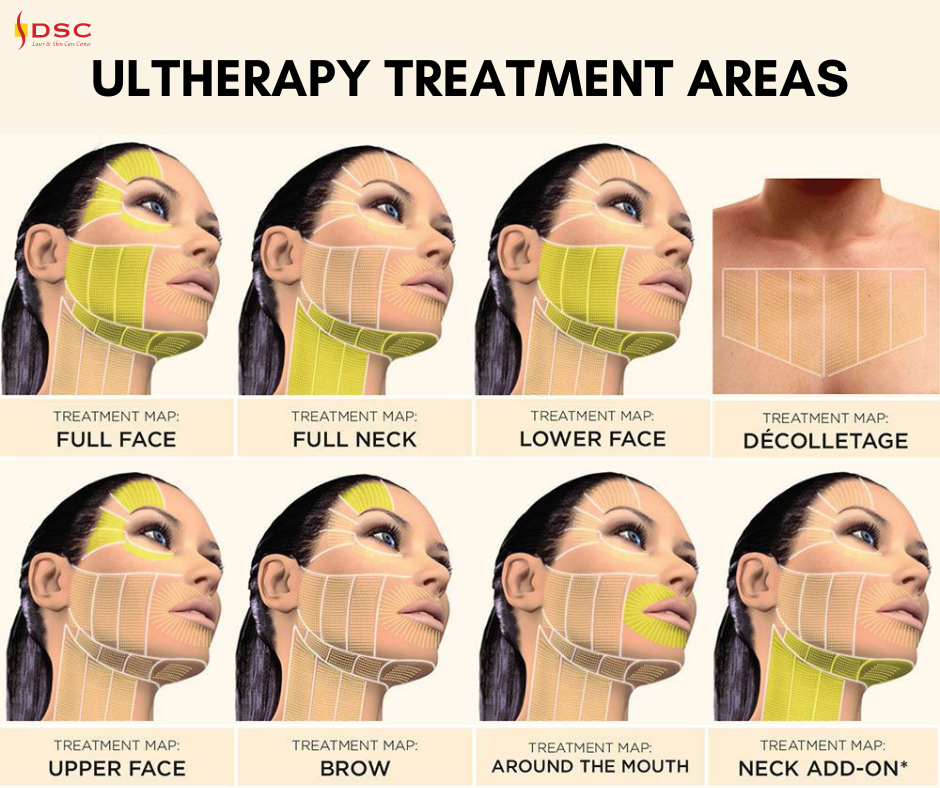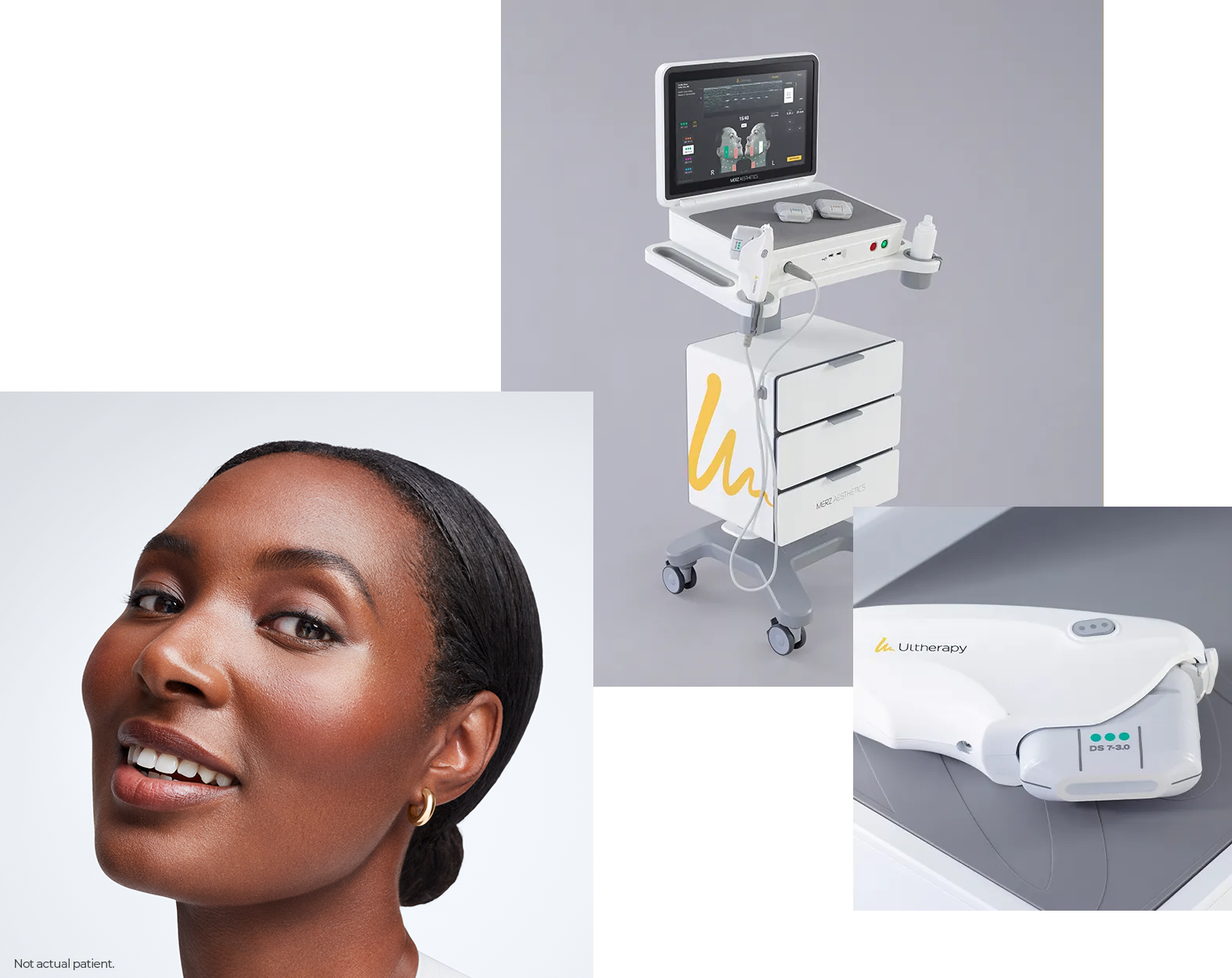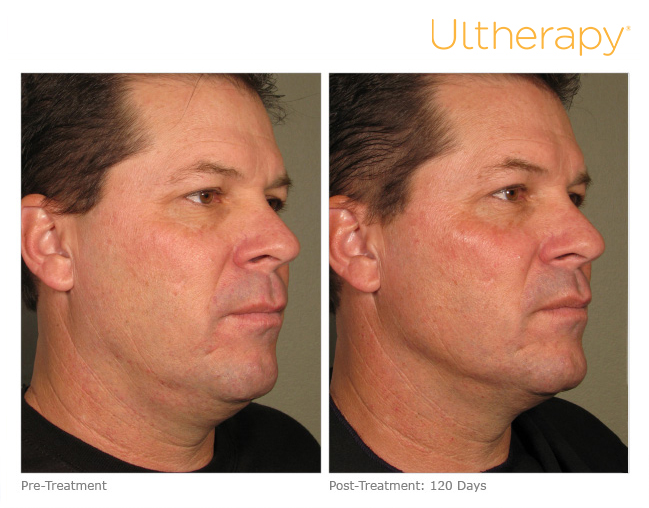Why Ultherapy Could Be Clinically Needed: Exploring the Factors for a Non Surgical Lift
Ultherapy is acquiring attention as a sensible choice for individuals encountering skin laxity because of aging or certain medical problems. This non-surgical treatment stimulates collagen manufacturing, using a solution that stays clear of the healing time related to intrusive procedures. As individuals look for to enhance not only their look however additionally their general skin wellness, comprehending the circumstances that call for Ultherapy's use ends up being essential. What factors add to its medical requirement?
Recognizing Ultherapy: What It Is and Exactly how It Functions
Ultherapy, a non-invasive cosmetic procedure, uses ultrasound modern technology to stimulate collagen production and advertise skin tightening up. By supplying focused ultrasound energy deep right into the skin, it targets the foundational layers normally addressed in surgical facelifts. This procedure urges the body's natural recovery feedback, resulting in progressive training and firm of the skin in time.

Therapy sessions generally last in between 30 to 90 minutes, depending upon the size of the area being dealt with. While outcomes may not be immediately noticeable, perfect results generally show up within 2 to 3 months as collagen proceeds to develop. Ultherapy offers an engaging non-surgical option for people seeking skin renewal without the demand for invasive procedures.
The Aging Refine: Effects on Skin Elasticity and Collagen
Aging certainly brings changes that reduce skin flexibility and collagen manufacturing, leading to visible indicators of sagging and creases. As individuals age, the skin's capacity to retain wetness declines, resulting in a drier and less durable surface area. Collagen, an important protein in charge of skin framework, likewise lessens, causing the skin to lose its firmness and younger look. Variables such as sun exposure, environmental contaminants, and way of life choices even more accelerate this decrease in skin top quality.
This loss of flexibility and collagen develops a waterfall of adjustments, consisting of the development of dewlaps, growing nasolabial folds up, and a total sagging look. The skin's assistance system damages, making it more susceptible to the effects of gravity. Subsequently, several people seek treatments like Ultherapy to deal with these aging results, intending to restore an extra youthful, taut appearance without the need for intrusive procedures.
Clinical Problems That May Benefit From Ultherapy
Ultherapy is significantly acknowledged for its potential advantages in attending to numerous medical problems. Individuals experiencing skin laxity, those in post-surgical recovery, and individuals with chronic skin disease may locate this non-invasive treatment useful. By stimulating collagen production, Ultherapy can boost skin firmness and boost overall look for these groups.
Skin Laxity Problems
Skin laxity can be a significant worry for individuals experiencing different clinical problems that impact the integrity and elasticity of their skin. Problems such as Ehlers-Danlos syndrome, which interrupts collagen manufacturing, can result in early skin aging and drooping. Furthermore, people with autoimmune problems may experience skin modifications that add to laxity. Hormonal changes, specifically during menopause, likewise play a role in reducing skin suppleness. Ultherapy, utilizing ultrasound innovation, targets the much deeper layers of skin, boosting collagen production and tightening up the affected areas. This non-invasive treatment might supply a practical option for those looking for to address skin laxity resulting from these medical conditions, boosting both appearance and self-esteem without the requirement for surgical treatment.
Post-Surgical Recuperation Help
Post-surgical recovery can frequently present difficulties, specifically for people experiencing skin laxity due to surgical interventions. Ultherapy serves as a prospective aid in this circumstance, making use of ultrasound innovation to promote collagen production and enhance skin tightness without invasive procedures. Clients who have gone through surgical treatments such as renovations, lipo, or other body contouring procedures may find that Ultherapy enhances their healing by dealing with unequal structure and laxity that can occur post-operation. This non-surgical approach can result in improved aesthetic end results, possibly lowering the demand for added surgical treatments. It may assist relieve pain connected with the healing procedure, offering individuals a much more all-encompassing recuperation experience. Subsequently, Ultherapy can Discover More be a useful option in post-surgical treatment.
Chronic Skin Problem
For people experiencing from chronic skin problem such as acne scars, rosacea, or laxity as a result of aging, non-invasive treatments may use considerable relief and renovation. Ultherapy has become an appealing option, making use of ultrasound technology to boost collagen production deep within the skin. This procedure can improve skin texture and flexibility, resolving problems like unequal complexion and sagging. Specifically, those with rosacea may experience minimized redness and swelling, while patients with acne scars can profit from boosted skin smoothness and total appearance. Significantly, Ultherapy provides a non-surgical option that decreases recovery time and dangers connected with invasive procedures, making it an attractive selection for individuals seeking reliable monitoring of persistent skin disease.
Emotional Influence of Sagging Skin and Aesthetic Problems
The emotional toll of aging commonly shows up in the form of sagging skin, which can substantially affect an individual's this page self-worth and overall psychological wellness. Lots of people associate younger looks with power and good looks, leading to feelings of inadequacy when confronted with noticeable indicators of aging. This perceived decline in charm can result in social anxiety, withdrawal from social interactions, and a boosted obsession with one's look.
People might really feel compelled to seek aesthetic treatments to combat these concerns, as the desire to maintain a youthful appearance can become intertwined with individuality. The mental effects of sagging skin may additionally bring about clinical depression or a diminished quality of life. Non-surgical alternatives like Ultherapy arise as prospective services, aiming not only to renew the skin yet likewise to restore self-confidence and a favorable self-image, eventually dealing with the much deeper psychological implications of aging.
Contrasting Ultherapy to Standard Surgical Options
When comparing Ultherapy to typical medical options, significant distinctions emerge in both cost-effectiveness and recuperation time. Ultherapy deals a non-invasive method that often results in reduced costs and minimal downtime for clients. On the other hand, medical lifts generally require even more financial investment and an extensive healing duration.
Cost-Effectiveness of Ultherapy

Conventional medical lifts frequently come with considerable in advance prices and prolonged healing times, Ultherapy presents a compelling option that can supply comparable results at a portion of the cost. The ordinary cost of a surgical renovation can range from $7,000 to $15,000, while Ultherapy treatments typically drop in between $2,000 and $4,500, depending on the area treated and supplier knowledge. Furthermore, the absence of extensive pre-operative evaluations read this post here and post-operative care associated with Ultherapy even more contributes to its cost-effectiveness. This approach not just reduces monetary strain but additionally permits individuals to invest in other aspects of their health and health. In this way, Ultherapy arises as a financially feasible choice for those seeking facial restoration without the problems of standard surgical treatment.
Healing Time Contrast
Recuperation time is a considerable element in the decision-making procedure for those thinking about cosmetic procedures. Ultherapy stands out as a non-surgical alternative that usually requires very little downtime. Most individuals can return to their daily activities nearly right away, experiencing just mild inflammation or swelling that generally fixes within a couple of hours. In comparison, conventional surgical choices, such as renovations, frequently require a prolonged healing duration. Patients may deal with a number of weeks of swelling, wounding, and restricted activity, with some returning to normal regimens taking up to three months. This stark difference in recuperation time makes Ultherapy an appealing selection for people looking for efficient results without the extensive aftercare associated with surgery, allowing for a smoother adjustment back to day-to-day life.
The Long-Term Conveniences of Non-Invasive Treatments for Skin Health
As people significantly seek alternatives to surgeries, the long-term benefits of non-invasive therapies for skin health and wellness become more noticeable. Treatments such as Ultherapy, chemical peels, and laser therapy offer substantial advantages without the demand for substantial recovery times linked with surgical treatment. Density RF Malaysia. In time, these non-invasive alternatives can promote collagen production, bring about firmer skin and a much more youthful look
In addition, regular non-invasive treatments can boost skin appearance, tone, and elasticity, boosting overall skin health and wellness. Individuals often experience fewer issues and side impacts, making these treatments extra appealing.
The advancing impacts of constant treatments can sustain and extend visual enhancements, enabling individuals to preserve their preferred look with minimal downtime. By prioritizing non-invasive techniques, people can attain long-term outcomes while prioritizing their wellness and wellness. Eventually, the long-term advantages of such methods underscore their expanding popularity in modern-day skincare.
Frequently Asked Concerns

How much time Does an Ultherapy Session Usually Take?
An Ultherapy session generally lasts in between 30 to 90 minutes, depending upon the therapy area. Elements such as the person's specific requirements and the degree of the procedure can influence the general period.

Exist Any Kind Of Negative Effects Connected With Ultherapy?
Ultherapy can result in side impacts such as short-lived soreness, swelling, or tenderness in the treated location - Density RF Malaysia. While many individuals experience marginal pain, it is crucial to speak with a professional for personalized suggestions and possible reactions
How Quickly Can I See Outcomes After Treatment?
Results from Ultherapy typically start to show up within a couple of months post-treatment. The full impacts might proceed to establish over 6 months as collagen manufacturing rises, bring about noticeable training and tightening of the skin.
Is Ultherapy Suitable for All Skin Kinds?
Ultherapy is generally appropriate for numerous skin kinds, including lighter and darker tones. Nonetheless, individual skin problems and concerns may impact its efficiency, making assessments with a certified specialist important for tailored referrals.
How Often Should Ultherapy Treatments Be Repeated?
Ultherapy treatments are usually suggested every 6 to one year, relying on private skin disease and wanted outcomes. Normal assessments by a qualified practitioner can help determine the very best frequency for maintenance and effectiveness.